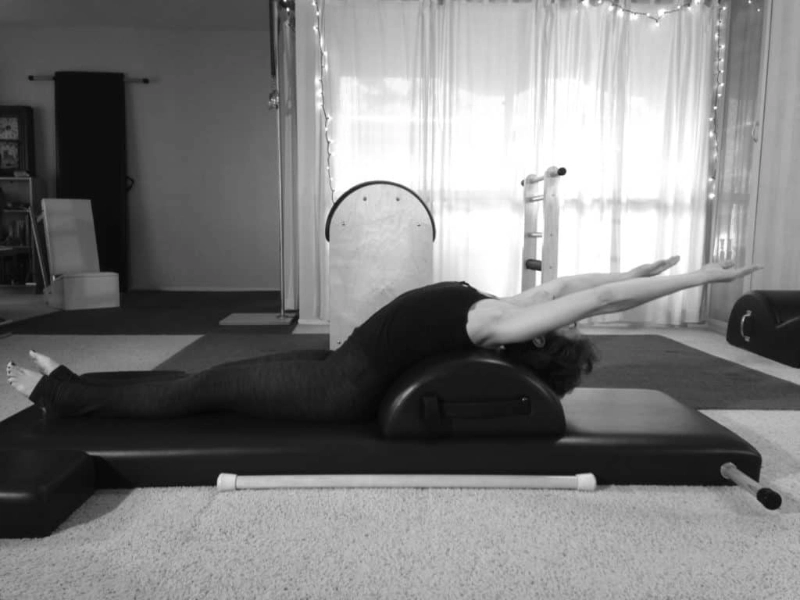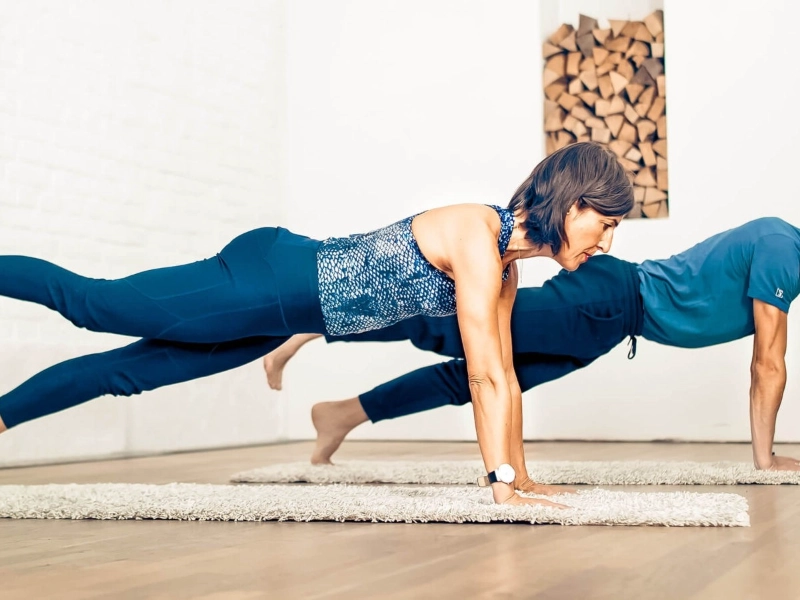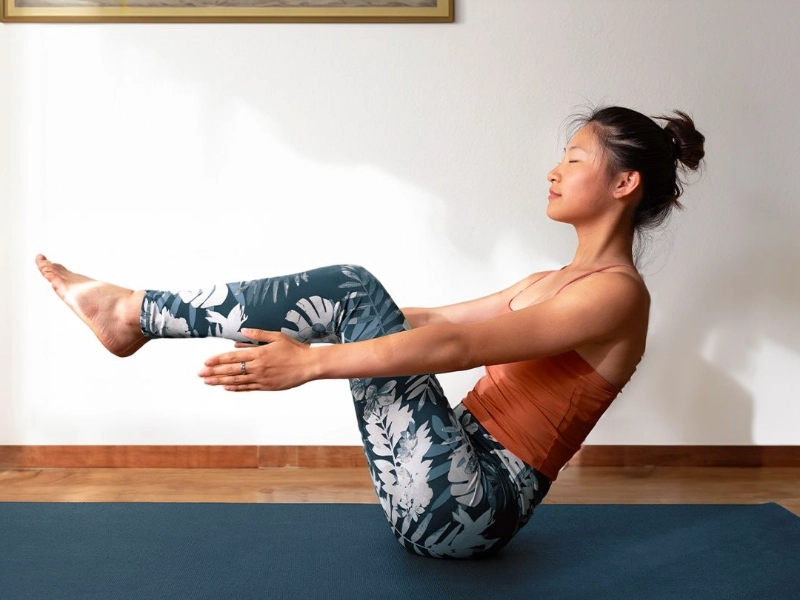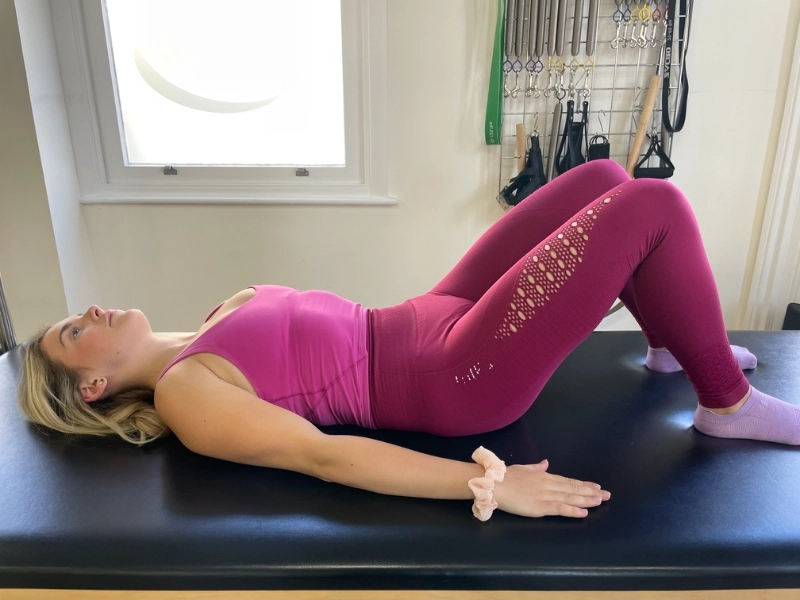Many students find the Pilates Roll Up challenging due to a stiff spine. Instead of pushing through the full movement, it’s more beneficial to incorporate additional spinal stretch exercises, such as wall roll downs and supported roll backs, to help loosen the spine. Preparatory exercises like pelvic rocking and segmental bridging can also be effective.

 A common issue is that students' legs and feet tend to lift off the mat when the upper body rises. This often occurs because the hip flexors, which assist in bending the hips, also compress the abdominals and flex the spine, making spinal mobilization difficult without leg support.
Encourage students struggling with back arching to bend their knees. This adjustment helps anchor the legs, allowing for a better "C" curve and increased spinal mobility without pain or neck strain. Remind them that Pilates is about building effective movement patterns for everyday life, not just increasing strength.
A common issue is that students' legs and feet tend to lift off the mat when the upper body rises. This often occurs because the hip flexors, which assist in bending the hips, also compress the abdominals and flex the spine, making spinal mobilization difficult without leg support.
Encourage students struggling with back arching to bend their knees. This adjustment helps anchor the legs, allowing for a better "C" curve and increased spinal mobility without pain or neck strain. Remind them that Pilates is about building effective movement patterns for everyday life, not just increasing strength.
 Some individuals find the Roll Up challenging due to inadequate abdominal strength or a stiff spine. This often leads to excessive tension in the abdomen, which can cause discomfort or even back pain.
To enhance form, consider using a small bolster under the legs during the Roll Up. This prevents the feet from dropping to the mat, which can strain the lower back and hip flexors.
Proper breathing is crucial throughout the exercise. Newcomers to Pilates should focus on using their breath to guide their movements rather than relying on momentum. When reaching for the toes, avoid pushing off the shoulders or arching the neck. Instead, initiate the movement from the waist while keeping the abdominals engaged, visualizing the spine peeling off the mat like a banana.
Some individuals find the Roll Up challenging due to inadequate abdominal strength or a stiff spine. This often leads to excessive tension in the abdomen, which can cause discomfort or even back pain.
To enhance form, consider using a small bolster under the legs during the Roll Up. This prevents the feet from dropping to the mat, which can strain the lower back and hip flexors.
Proper breathing is crucial throughout the exercise. Newcomers to Pilates should focus on using their breath to guide their movements rather than relying on momentum. When reaching for the toes, avoid pushing off the shoulders or arching the neck. Instead, initiate the movement from the waist while keeping the abdominals engaged, visualizing the spine peeling off the mat like a banana.
 Beginners often neglect to maintain a neutral spine, which can lead to injuries and discomfort. The Pilates Roll Up should encourage a natural curve in the spine, promoting better spinal cord function, tendon and nerve health, and improved blood circulation.
This position allows for gluteal muscle engagement, helping to stabilize the body and prevent lower back arching and tailbone tucking. Proper gluteal engagement enhances flexibility in the lower back and hips. Practicing the correct technique with an experienced instructor can help avoid injuries and lead to a more effective workout. Additionally, practicing the Pilates Roll Up with a supportive partner can be beneficial.
Beginners often neglect to maintain a neutral spine, which can lead to injuries and discomfort. The Pilates Roll Up should encourage a natural curve in the spine, promoting better spinal cord function, tendon and nerve health, and improved blood circulation.
This position allows for gluteal muscle engagement, helping to stabilize the body and prevent lower back arching and tailbone tucking. Proper gluteal engagement enhances flexibility in the lower back and hips. Practicing the correct technique with an experienced instructor can help avoid injuries and lead to a more effective workout. Additionally, practicing the Pilates Roll Up with a supportive partner can be beneficial.